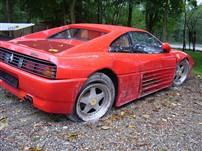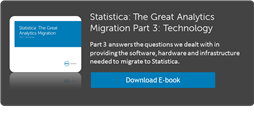“Why would you use a Ferrari to haul a load of dirt?”
Yeah. Why would you?
 |
|
Photo Credit: Falk Lademann |
You wouldn’t, of course, at least not knowingly. But a few months into the Great Analytics Migration I described last month, our migration team found analytics users at Dell who had been doing the equivalent for years. That’s when the question about using a Ferrari as a dump truck started making the rounds.
Better-fitting tools for data management and manipulation
The “Ferrari” was a well-known legacy analytics software product designed to run on mainframes back in the 1970s. (You can probably guess which one it is).
It happens that the product includes tools for data management and data manipulation, so our users became accustomed to using the Ferrari, with its high licensing fees and remarkable analytics capabilities, for “hauling loads of dirt;” that is, manipulating data before analyzing it.
In all fairness, most of the users were just doing what they’d learned from other users within Dell. And they weren’t ruining the Ferrari’s transmission or even scratching the paint. But as an enterprise software company, we have a line of products like Toad Data Point that cost less and are perfectly suited to the task of accessing and working with big data sources. And anyway, the entire migration project was about moving off the well-known legacy analytics software product and replacing it with Statistica, an easier–to-use analytics platform that we had acquired.
So using a Ferrari to haul a load of dirt was costing us licenses that didn’t need to be tied up on data management and data manipulation tasks. It’s an extremely expensive way to perform relatively common functions.
Better yet, as we separated analytics from data management at the software level, we also separated them at the organizational level. In the course of our migration project, we moved data management and manipulation to Toad Data Point, handled by data integration experts, and analytics and modeling to Statistica, handled by analytics professionals. That has put each team is in its respective wheelhouse.
The Great Analytics Migration – new e-book
Are you by any chance using an well-known legacy analytics software product to manipulate your data? If so, then some of your users are probably using a Ferrari to haul dirt.
That may be all right with you, but if it isn’t, have a look at “Statistica: The Great Analytics Migration , Part 3: Technology” to find out how we switched analytics platforms worldwide in a matter of months.




